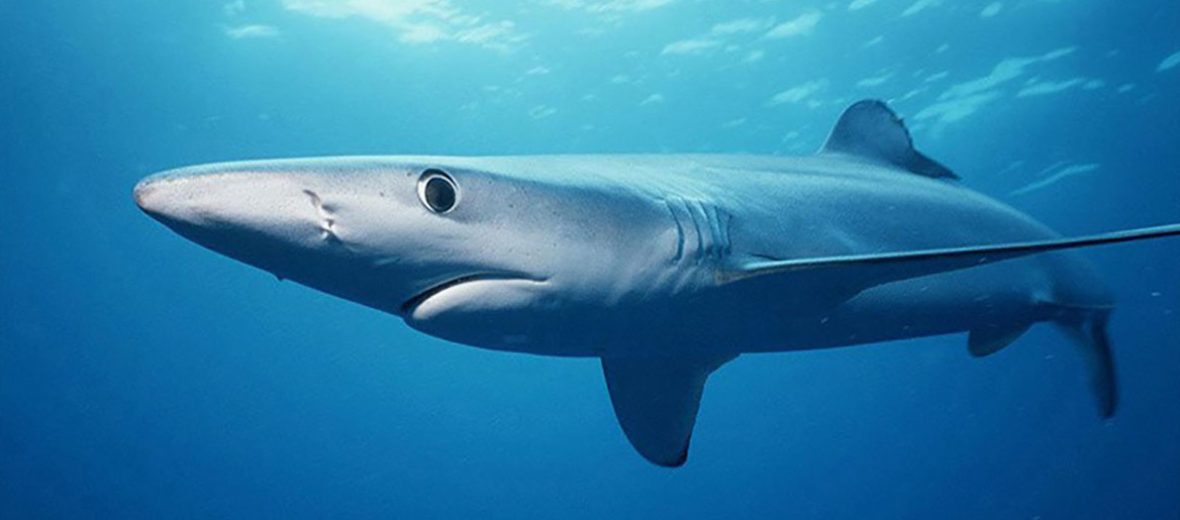
Found throughout the world’s oceans, from the cold temperate waters to the tropics, it’s the blue shark. These sharks specialize in smaller prey; even though they are medium to large sized sharks. Blue sharks spend most of their lives far from coastal waters and are a true pelagic (open sea) species. As the title suggests, they are a highly migratory species of shark that travel the world’s oceans during their lifetime. Due to bycatch (getting caught in fishing nets), sport fishing, and over hunting for their fins, these beautiful sharks are listed as Near Threatened by the IUCN and their numbers are decreasing.
First the Stats…
Scientific name: Prionace glauca
Weight: Up to 250 lbs.
Length: Up to 13 feet
Lifespan: Up to 20 years
Now on to the Facts!
1.) This deep water shark can descend to depths of up to 1,150 feet.
2.) Blue sharks prey on mackerel, squid, octopus, crab, lobster, seals, turtles, and even birds.
3.) They are preyed on by larger sharks, like great white sharks and tiger sharks, orca, and larger fish (when younger).
4.) They swim thousands of miles in order to find food or a mate, making them highly migratory.
5.) Due to the scarcity of their food, they have been known to gorge themselves to the point of regurgitating. Only to go back and eat their regurgitated food. Mmmmm, recycled food.
But wait, there’s more on the blue shark!
6.) Blues should be respected and distance kept, as attacks on humans have occurred.
7.) Blue sharks are the most widely distributed shark in the world.
Did you know…?
These sharks can swim at speeds of up to 43 mph!
8.) They are viviparous, with a yolk-sac placenta, and the female can deliver up to 135 pups per litter!
9.) The blue shark, like other sharks, is polygamous (have more than 1 mate).
10.) Even though they can be dangerous to humans, only 13 recorded attacks have been noted, with 4 being fatal. In contrast, 10 – 20 million blue sharks are killed each year!
Now a Short Blue Shark Video!
Also, check out the Critter Science YouTube channel. Videos added frequently!
Want to suggest a critter for me to write about? Let me know here.



